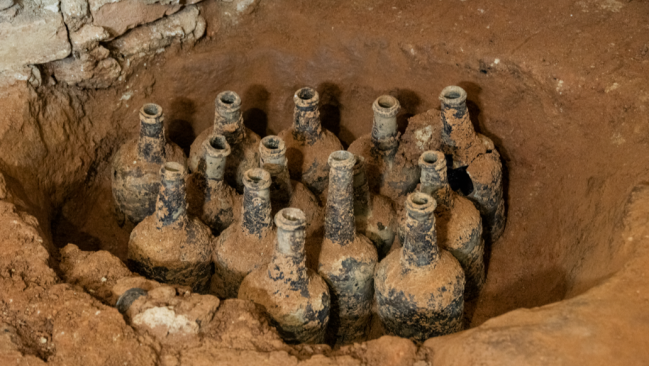Hidden treasure: 18th-century bottles of cherries found in George Washington's Mount Vernon home
He was famously accused of cutting down a cherry tree, which may or may not have happened, but we do know the first president of the United States stored many bottles of the fruit at his Mount Vernon home in Virginia.
Archaeologists working on a $40 million restoration of George Washington's home discovered dozens of glass bottles containing cherries and other berries in storage pits dug in the cellar of the famous mansion.
 |
President George Washington home at Mount Vernon in Virginia. (Photo credit: Backyard Productions/Getty Images) |
Mount Vernon's principal archaeologist, Jason Boroughs, told The Associated Press the discovery of so much perfectly preserved food from centuries ago is unprecedented.
"Finding what is essentially fresh fruit, 250 years later, is pretty spectacular," Boroughs said in an interview. "All the stars sort of have to align in the right manner for that to happen."
Most homemade jams and jellies should be stored in a cool, dark, dry place between 50 and 70 degrees Fahrenheit.
The bottles were placed in the cellar at some point before 1775 because that's when that area was covered with a brick floor as part of an expansion of the mansion.
Of the 35 bottles found, 29 are intact and contain perfectly preserved cherries and berries, likely gooseberries or currants. The contents of each bottle have been carefully extracted and will undergo scientific analysis. The AP reports Mount Vernon will work with the U.S. Department of Agriculture to conduct DNA testing on the fruit. They're also studying cherry pits recovered from the bottles to see if any of them can be planted.
The chances of using a cherry pit to grow a tree are a long shot, Benjamin Gutierrez, a USDA plant geneticist, told the AP. Seeds preserve best when they are dry, and most of the samples found at Mount Vernon were waterlogged.
TMX contributed to this report.



